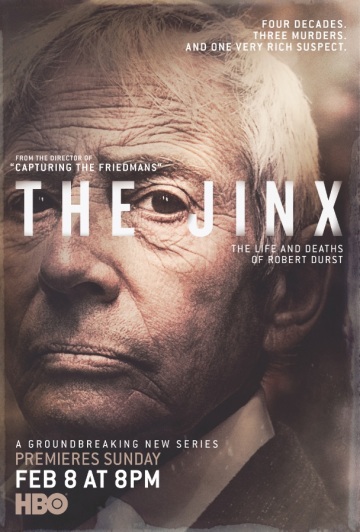Robert Durst has shark eyes. It’s not the most important thing about him, but it’s impossible to miss when you’re watching him being interviewed, which is what you do for a lot of The Jinx, a new HBO docuseries (six episodes long) about Robert Durst and the three murders he has been at the center of: His wife Kathie, who disappeared in 1982; his friend Susan Berman, found dead in her home in 2000; and his neighbor Morris Black, whose dismembered body was found floating in garbage bags in the Galveston Bay in 2001. Of the three, Durst claims no responsibility for his wife’s disappearance and Berman’s death, but does say Black died as a result of accidental gunfire during a struggle in Durst’s house.
Durst’s fear of being caught led him to do all manner of illogical things, including dismembering Black’s body and bagging it up in hopes that no one would be able to find the evidence. They did, but Durst was found not guilty of murder and has been a (mostly) free man ever since. Here’s the series trailer:
Part of what makes The Jinx such a success is that it taps into an inherently American narrative–the single, outcast white man whose inability to fit into society and repressed anger drive him to violence (cf. Elliott Rodger, David Berkowitz, Ed Gein, Jeffrey Dahmer, etc.). It’s the stuff of late-night news and horror films, and the best ending is the one where the murderer is behind bars for life. But even when they’re on the lam, these men can never settle for a quiet life. Durst was running from the police in New York, who were re-opening an investigation into his wife’s disappearance, when he met and (possibly) murdered Morris Black. Then, on the run again, he stole a sandwich from a supermarket. A chicken sandwich, from a Wegman’s in Bethlehem, Pennsylvania, to be specific. He wanted to get caught. They always do.
The show, set to conclude this coming Sunday evening, has a recurring cast of characters who met Durst at different points along his journey. The series director, Andrew Jarecki, interviewed Durst over the course of many hours, and the interview is woven between flashbacks to Durst’s childhood, trial tapes, and conversations with Durst’s friends (well, his attorneys) and foes. The most recent episode led to what looks like a smoking gun, but the whole story here is that even in the face of overwhelming circumstantial evidence, Durst is as slippery as a greased pig. He can wriggle out of situations that would have led most people straight to the execution chamber. His evasive tactics only go so far–his family’s money (Durst is the son of New York real estate tycoon Seymour Durst) does the rest. His eyes, so dark and with lids so heavy that you rarely see the whites, seem to hide a world of secrets. He blinks almost constantly, a tic that worsened with age.
One of the most powerful moments of the show comes when Galveston Police Detective Cody Cazalas, who was the detective on the Morris Black case, says “As a homicide investigator, you work for God. Because the victim isn’t there to tell his story. You’re there to represent the victim, you’re there to tell his story, you’re doing that for God.” Choked up, Cazalas asks the cameraman to stop filming. It’s in moments like these that the viewer remembers this isn’t a horror movie or a Lifetime drama; it’s the loss of three lives and the strange life of a poor little rich boy who feeds on control and admiration, even as an old man. It’s one of the most compelling, masterfully told stories on television right now.





